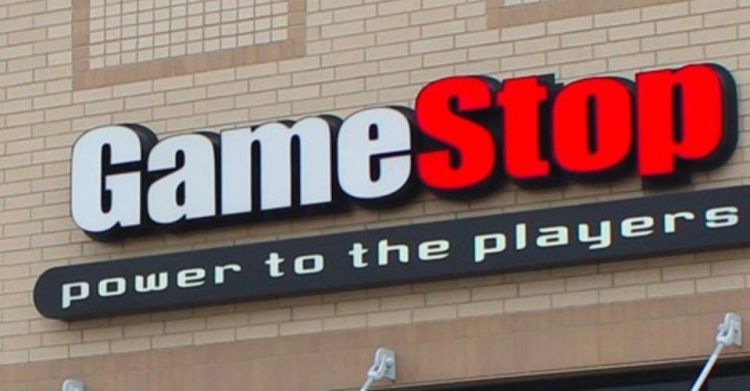Join us for this live webinar on Thursday, November 5th at 10 a.m. Pacific, 1 p.m. Eastern. Register here for free.
When GameStop first launched its mobile app, it underestimated just how passionate its users were in the mobile space. It may be the leader in retail gaming — with over 6,600 retail locations throughout the world — but like all brands, it’s had to learn some important lessons in evolving its mobile strategies, and this one was learned the hard way.
When it launched its new app in 2014, and offered loyalty points for users who checked in at retail stores, the initial code was written to accept check-ins within a five-mile radius. When they discovered customers were checking in from home, they changed the radius to one mile — and customers got really angry.
“We got so much backlash from our customers,” says Jason Allen, VP, Multichannel at GameStop, “and the reality was, whether they were checking in from home or in a store was inconsequential to the points we were awarding. But for those highly engaged mobile users, we saw how passionate they are about the services being provided and how vocal they are about the things they like and don’t like — and that led to us forging a better relationship because the more wiling they are to share what they’re doing and not doing, the more wiling they are to share what features they want to see next.”
And that formed the strategy of refining its mobile app which today has led to amazing growth: according to Allen, sales from mobile to store have been up by over 200 percent, traffic has seen strong double digits, and other important metrics such as pre-orders and trade-ins are all way up.
Explains Allen: “The secret to our success was no more basic than actually listening to our customers — and doing what they’re telling us they’re interested in as opposed to us pretending that we know what’s best for them.”
Focus on a few things
A mistake many brands fall into in their mobile strategy is trying to duplicate their entire online offering in the mobile space. Allen avoided this, and armed with a vast amount of customer data the company had amassed through its loyalty program, focused on what customers most wanted.
“Instead of saying ‘How can we take the entire desktop site and stuff it into a phone’, we said, ‘Why don’t we start off — with the capability to always do more — by focusing on the four or five things that customers are telling us every day they’d like to have.”
That resulted in their highly successful app that does five things really well for customers: standard things like finding a store near them, browsing and finding the products they want, and tracking pre-orders. But additionally, the app enables them to track their awards points and what they can spend them on, as well as look up the trade value of their products online. “We never gave customers that ability before we came out with the app,” says Allen.
Counter-intuitive multi-channeling
Those trade-ins are part of the reason that Gamestop is in an enviable position. Unique aspects of the game industry have allowed them huge success in a multi-channel approach. Rather than mobile, or online in general, cannibalizing other parts of their business, mobile has become a truly integrated component of sales.
“We are seeing the opposite of showrooming,” says Allen. “Customers still want to go to our stores and engage in a physical environment.” Of course, along with trade-ins, there’s a powerful sense of urgency in the gaming community — passionate customers waiting for a new game release don’t want to order it online and wait for delivery. And there’s also simply the in-store experience of talking to equally passionate in-store associates.
“What we saw was a tremendous amount of customer engagement online for browsing purposes to lead to in-store purchases,” Allen explains. He points to the tendency of marketers to want to translate desktop conversion into mobile, and how that can be problematic.
“Because they see desktop traffic declining and mobile traffic increasing, a lot of folks want to convert on a mobile device just like they would on desktop device,” says Allen. The challenge they run into is that conversion typically happens at a third of the rate of desktop conversion.
“For us, we don’t really look at that at all because we can see if Joey over here is browsing Halo on his mobile phone, and then within 24 hours goes into a store and buys Halo, we look at that as an influential sale. So we’re less focused on a myopic single channel and more focused on growing the business in any channel. By having visibility to how our customers interact across all channels, we’re able think more strategically as opposed to trying to hit a particular conversion number in one particular channel — when we know that traffic is influencing five to ten times that in stores.”
These are just some of the insights Allen shared in his conversation with VentureBeat. He’ll be going into far more detail during this week’s webinar and joined by another powerhouse marketer — Robin Zucker of Playboy Media.
Don’t miss this chance to eavesdrop on the inside strategies of these two, along with the deep insights from John Koetsier, Mobile Economist at Tune.
Don’t miss out!
What you’ll learn:
- Hear the mobile strategies that top tier B2C companies are using to engage consumers.
- Discover the mistakes some marketers make in measuring mobile engagement.
- Achieve the sweet balance between mobile customer engagement and user acquisition.
- Get top notch industry survey results from VB Insight’s latest mobile report.
Speakers:
John Koetsier, Mobile Economist, Tune
Robin Zucker, SVP Marketing, Digital Research, Playboy Media
Jason Allen, VP, Multichannel, GameStop
Moderator:
Wendy Schuchart, Analyst, VentureBeat
This webinar is sponsored by Tune.

